
Disgusting Food in Iceland

- 1. Hákarl (Fermented Shark)
- 2. Brennivín ("Black Death")
- 3. Súrir Hrútspungar (Sour Ram's Testicles)
- 4. Hot Spring Rye Bread
- 5. Harðfiskur (Dried Fish)
- 6. Svið (Sheep's Head)
- 7. Slátur (Blood Pudding)
- 8. Hangikjöt (Hung & Smoked Meat)
- 9. Laufabrauð (Leaf Bread)
- 10. Saltfiskur (Salted Fish)
- 11. Kæfa (Paté)
- 12. Whale
- 13.Gellur (Cod Tongues)
- 14. Hvalspik (Blubber)
- 15. Kútmagar (Fish Stomach)
- 16. Lundi (Puffin)
- 17. Kjötsúpa (Meat Soup)
- 18. Fiskisúpa (Fish Soup)
- 19. Skyr
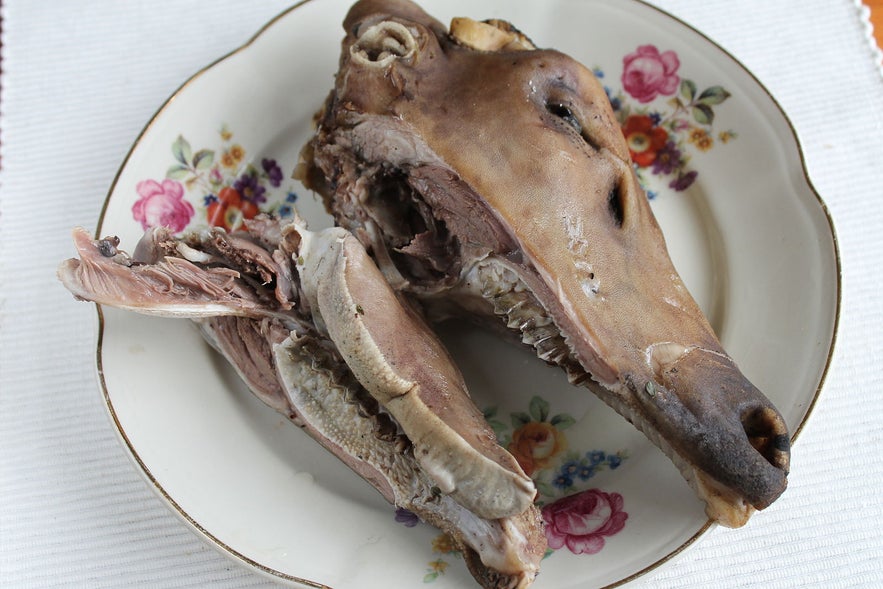
What is considered to be the most disgusting Icelandic dish? Where can you purchase your own sheep’s head, or tuck into a little-fermented shark? How can you persuade your taste buds that liquorice is, in fact, delicious to some people? All will be revealed as we delve into the most disgusting food available in Iceland.
Photo from Wikimedia, Creative Commons, by Navaro. No edits made.
- Sample some of the BEST food in Iceland on The Reykjavík Food Walk
- Get to know some Delicious Icelandic Recipes
- Read about The Weirdest Things About Icelanders
Whereas a few traditional Icelandic dishes are considered a delicacy, commonly eaten by locals and tourists, there are some dishes you might not want to eat in Iceland… that is unless you like a challenge. Some people have gone on record to claim the domestic cuisine here is the world's most disgusting food. Luckily though, Iceland is famed for its lamb and seafood, so there are plenty of delicious Icelandic foods to enjoy, too. If you want to get to know this unique cuisine, book a food and drink tour in Iceland and try it yourself!
Below, you can see Óli from the Guide to Iceland team helping a couple of guys from the UK to shop for and eat some traditional Icelandic food (spoiler: they don't seem to like most of it).
For centuries, Icelanders had to smoke, pickle or dry their food in order to preserve it through the harsh winters. As a result, traditional Icelandic food mainly consists of seafood and lamb that's gone through some kind of preservation method.
Fresh fruit and vegetables are a fairly new addition to the Icelandic cuisine (they only started appearing in the last century). Nowadays, the country prides itself on fresh ingredients and there are a number of fine dining restaurants in the country, as well as a Food and Fun Festival, where international chefs use Icelandic ingredients to come up with some truly delicious treats.
But if you want to experience something a bit more traditional then make sure to look out for the following food items and give them a try on your next trip to Iceland.
1. Hákarl (Fermented Shark)
You'll probably hear that the traditional way of fermenting shark is to bury it in the ground and then urinate on it before letting it rot for some months. This is not entirely true.
The urinating bit is true, but the shark doesn't rot, it ferments. And urine is no longer used in this process, but it was used back in the day before modern culinary techniques could be used.
The shark does actually smell of ammonia, which is where the urban myth comes from. It has been cured with a particular fermentation process, consisting of burying the shark underground and hanging it to dry for four to five months. This is done to get rid of the acid in the flesh which makes it impossible to eat fresh.
So the shark is not rotten (which some people wrongly believe) but it is fermented. There's a bit of a difference.
The result is, uhm, an acquired taste. Connoisseurs of very strong cheese may take a liking to it on the first bite. For others, well, let's just say it's not a common dish anymore; it is mostly the older generation in Iceland who still eat and enjoy it.
For a small fee, you can taste a sample in the food section of the Kolaportid flea market on the weekends. They just love selling samples to tourists to watch their faces turn sour! For the ones that are extra hardcore, rinse it down with a shot of Brennivín.
2. Brennivín ("Black Death")
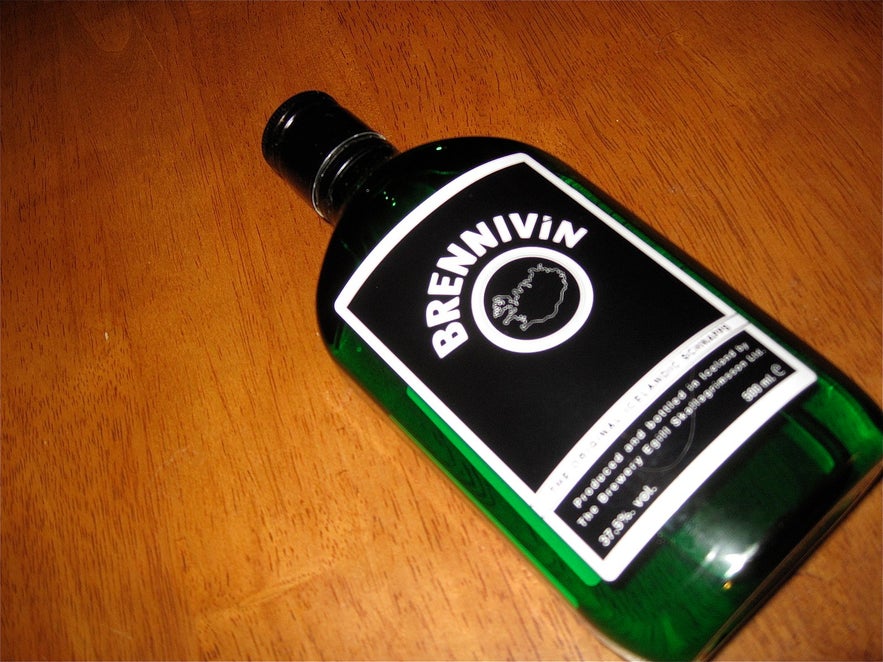 Photo from Wikimedia, Creative Commons, by cogdogblog. No edits made.
Photo from Wikimedia, Creative Commons, by cogdogblog. No edits made.
Brennivín can be directly translated as 'burning wine' - although it's mostly marketed as 'Black Death'. Brennivín is a schnapps made from fermented potatoes and caraway.
And yes, it tastes strongly of caraway, but it is mainly a rapid delivery system to oblivion, which, if you are eating fermented shark and sour ram’s testicles, is probably not such a bad thing.
What more can you expect from a nation who weren't blessed with legal beer until 1989?
3. Súrir Hrútspungar (Sour Ram's Testicles)
That brings us to ram's testicles, a tricky one to justify, no doubt.
Iceland used to be a very poor country, full of poor farmers that would make the most of anything they could eat. That, naturally, included the testicles of the ram.
To preserve them through the winter, the testicles were soured. I don't really think I need to say much more about this. This is not a common dish anymore - but I have tried it once before, admittedly. I don't want to do it again.
4. Hot Spring Rye Bread
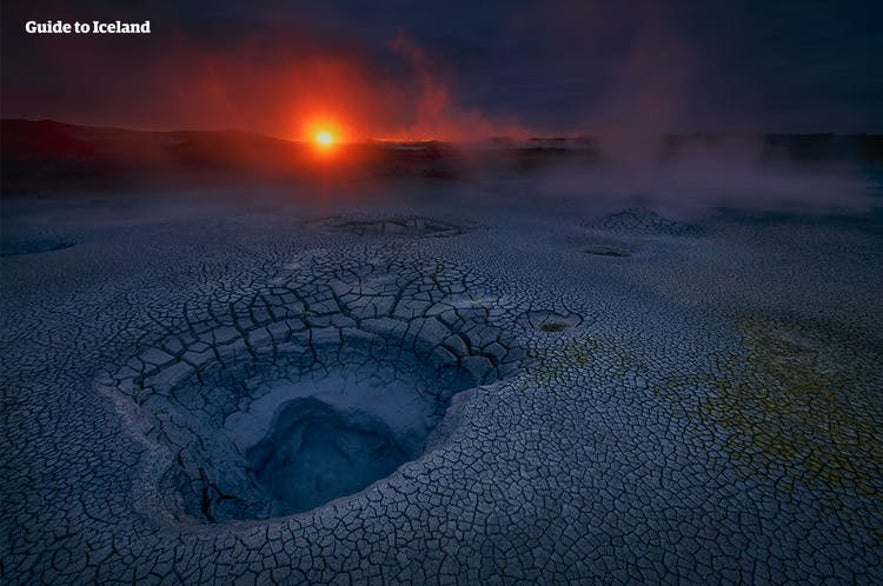
Let's move on to something a bit tastier.
The Icelandic rye bread is very popular in the country. It's a dark bread that's got a very particular taste: it’s slightly sweet.
Nonetheless, it's not a pastry and is mostly eaten on its own with butter, accompanying fish or hung and smoked lamb (called hangikjöt, which we will come on to below). One option in cooking this bread is to put the dough into special wooden casks in the ground close to a hot spring and pick it up the next day.
Absolutely delicious!
5. Harðfiskur (Dried Fish)
 Photo from Wikimedia, Creative Commons, by cogdogblog. No edits made.
Photo from Wikimedia, Creative Commons, by cogdogblog. No edits made.
Another popular food item is the dried fish - usually cod or haddock. This is very popular amongst Icelanders, and some foreigners have enjoyed it too.
It's sort of like a 'fish jerky'. Icelanders eat tonnes of this every year with butter on top, as the texture of the fish is very dry and the butter makes it softer. You need to chew each bite very thoroughly before swallowing it!
It's very rich in protein. In fact, 100g holds about 80-85% of one's daily protein in it.
It's one of my favourite Icelandic foods and I recommend you try it on your travels. You will either love it or hate it, but there’s only one way to find out!
6. Svið (Sheep's Head)
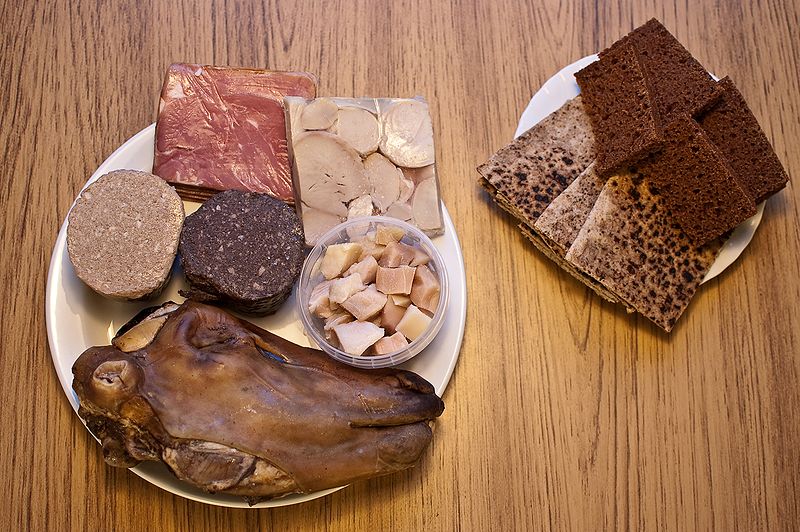
My mother's favourite food/delicacy is a sheep's head. You can get it pre-cooked in a small grocery store called Melabúðin in the west part of town, or frozen in pretty much any supermarket.
The whole head is eaten, with the exception of the brain (which is considered a delicacy in France). There is debate over what is the tastiest part of the head, with some people saying it’s the cheek or tongue, and others claiming the eyes are the best part.
The presentation is mainly what throws people off. However, it tastes exactly like lamb or mutton and is actually rather delicious.
At the "Fljótt og Gott" ("Fast and Good") caféteria at the BSI bus terminal in Reykjavik, svið is available daily and can be bought at the drive-through counter.
You can also get sviðasulta (sheep head jam) - which is constructed by chopping up the meat from cooked sheep heads, pressing it into moulds and then cooling it. Sviðasulta is eaten as a bread topping.
7. Slátur (Blood Pudding)
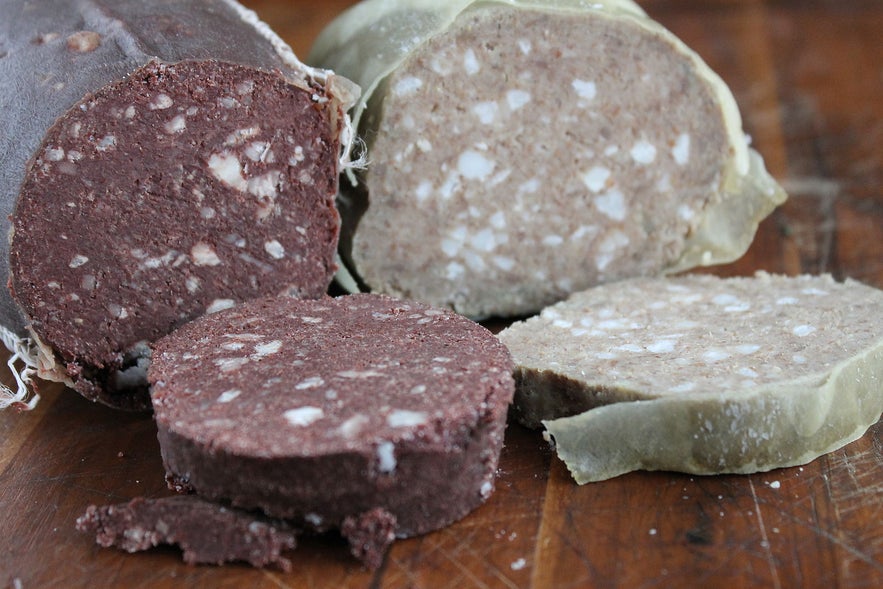 Photo from Wikimedia, Creative Commons, by Navaro. No edits made.
Photo from Wikimedia, Creative Commons, by Navaro. No edits made.
Slátur literally means 'slaughter'. It's a dish made out of sheep's innards, blood and fat. This is a dish that's very regularly served with the sheep's head.
It's Iceland's answer to black or white pudding, or the Scottish haggis.
Blood pudding is also served at many gatherings along with sweet rice pudding, which is a slightly odd combination.
There are two types of slátur: Blóðmör (blood pudding) or lifrarpylsa (liver sausage). Blóðmör resembles English/Irish black pudding and lifrarpylsa resembles Scottish haggis, although the Icelandic slátur is much smoother in texture.
Some people like to eat their slátur with sugar sprinkled over it. Personally, I'm not a fan of it, I don't like the fat texture, but many Icelanders, young and old, couldn't disagree more!
8. Hangikjöt (Hung & Smoked Meat)
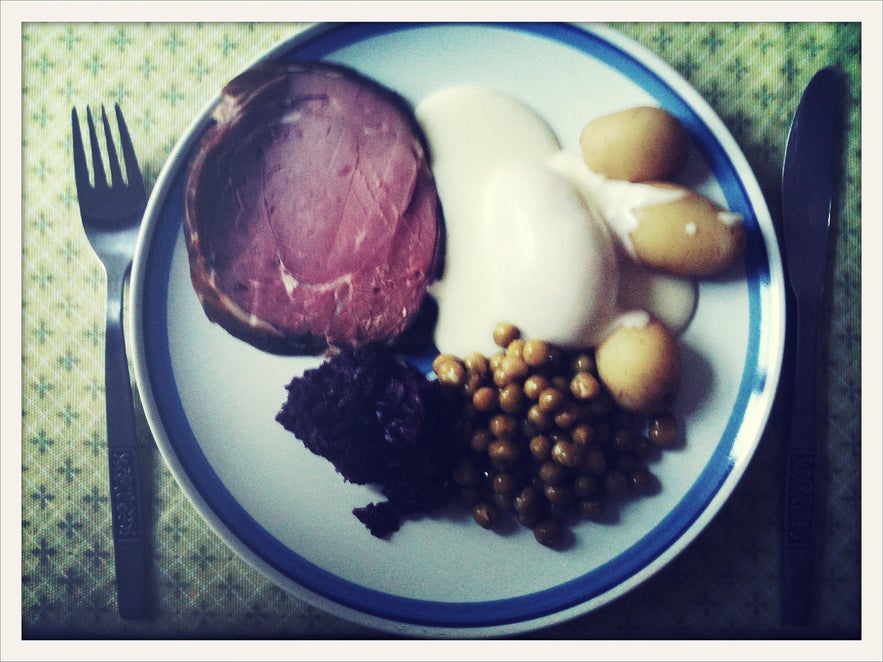 Photo from Wikimedia, Creative Commons, by Martin Sønderlev Christensen. No edits made.
Photo from Wikimedia, Creative Commons, by Martin Sønderlev Christensen. No edits made.
A delicacy that's mostly eaten during Christmas.
The meat (lamb or mutton) is smoked, either with birch or dried sheep dung. It is then usually boiled and served either hot or cold in slices with peas, potato mash and a white sauce called 'uppstúfur' (similar to béchamel sauce).
Often a thin cracker type bread, laufabrauð (leaf bread) accompanies it. In recent years, 'twice smoking' the meat has become popular, that is eaten raw - much like Italian prosciutto and it is very tasty.
You can also buy slices of hangikjöt in supermarkets to eat as a topping on bread.
9. Laufabrauð (Leaf Bread)
This is a very thin circular 'bread' - similar to a poppadom in texture.
It is differently flavoured from poppadom though and often eaten with butter. The laufabrauð is fried in hot oil but before it's fried a pattern is cut into it, which is often done as a family Christmas tradition.
There are many traditional patterns, but this can also be a way for you to show your creative side!
10. Saltfiskur (Salted Fish)
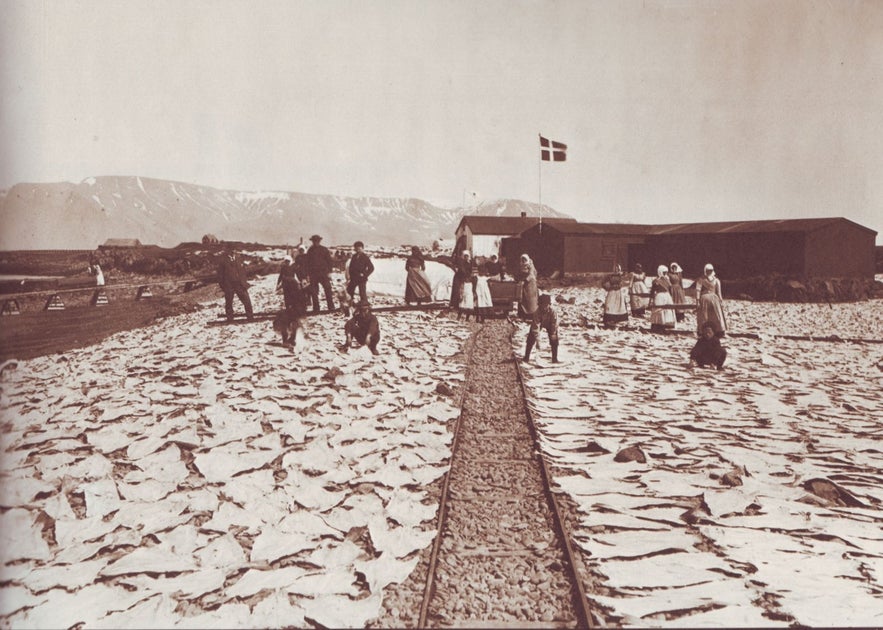 Photo from Wikimedia, Creative Commons, by Sigfús Eymundsson. No edits made.
Photo from Wikimedia, Creative Commons, by Sigfús Eymundsson. No edits made.
One of the traditional methods used to preserve food was to salt it. And then I mean plenty of salt.
The fish would be completely covered in salt, which dries up the fish as well. Before cooking it, it needs to be soaked in water for hours or even 2-3 days, the length depending on how big the fish is, how much of the salt you want to get rid of and how often you change the water.
Today, you can buy 'lightly salted fish' - which doesn't need to be watered out. That one doesn't give you the same taste or texture as the 'properly' salted fish.
Traditionally the fish would just be boiled and served with potatoes and rye bread but today it's popular to cook it in a Spanish or Italian style, with tomatoes and olives for example. Icelandic salted cod remains one of Iceland's biggest exports and is a popular delicacy in Portugal, Greece and Spain.
11. Kæfa (Paté)

Icelandic paté is a favourite to layer onto bread.
The Icelandic kæfa is mainly made out of mutton and is pretty much identical to a paté - but you can get it in various forms, smooth or course.
12. Whale
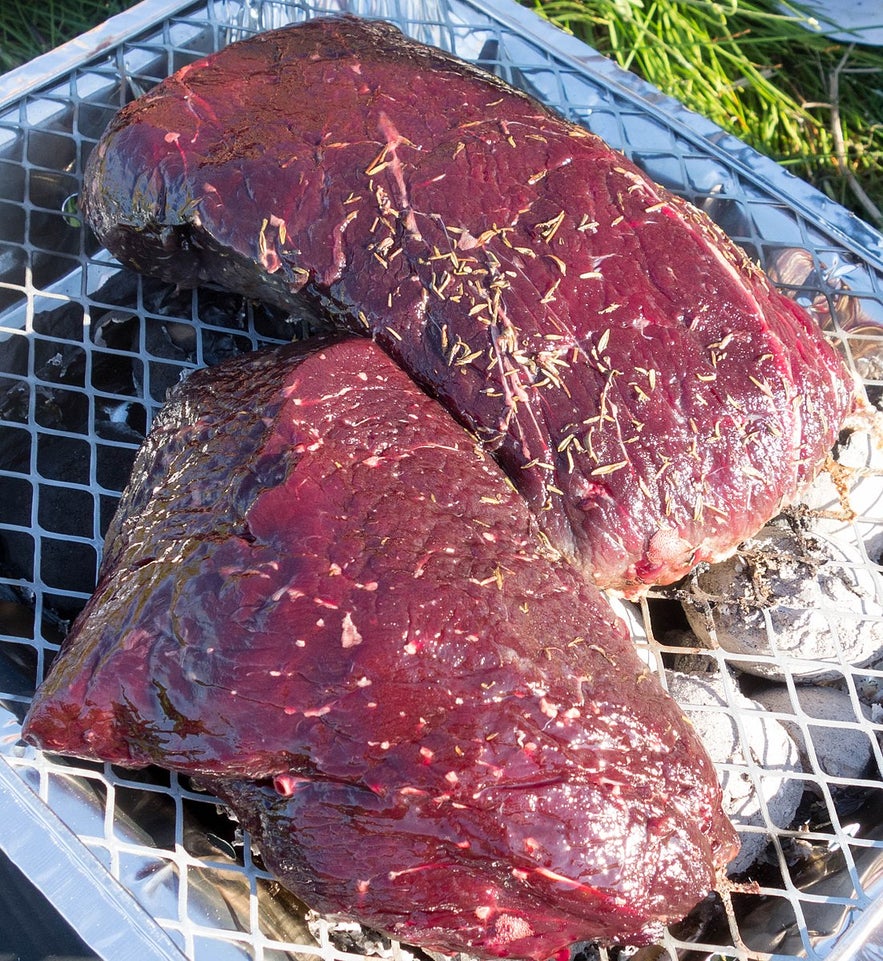 Photo from Wikimedia, Creative Commons, by Kent Wang. No edits made.
Photo from Wikimedia, Creative Commons, by Kent Wang. No edits made.
The whale consumed in Iceland is Minke whale. Whale meat can both be eaten raw or cooked.
Guide to Iceland does not endorse the consumption of whale meat.
13.Gellur (Cod Tongues)
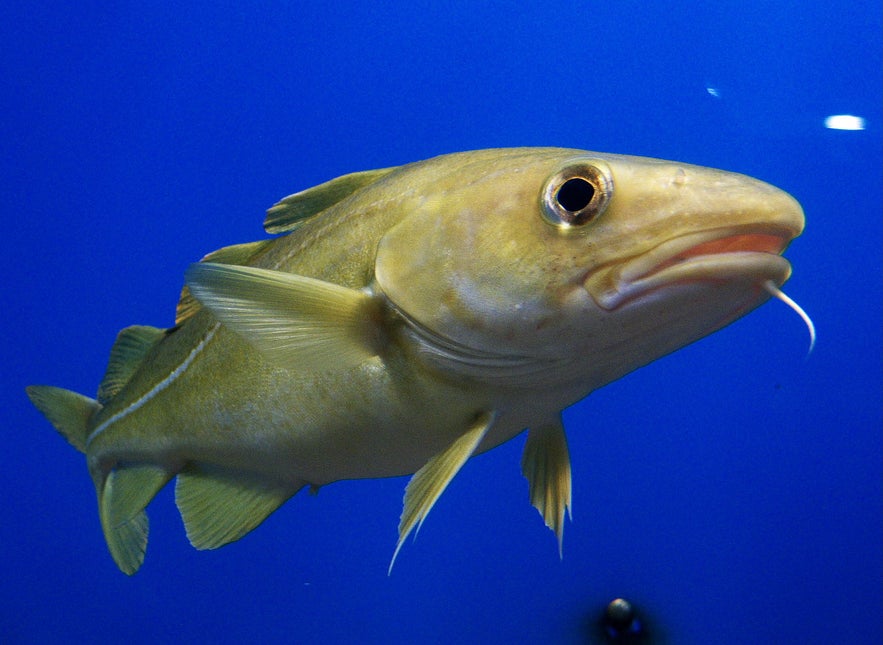 Photo from Wikimedia, Creative Commons, by August Linnmann. No edits made.
Photo from Wikimedia, Creative Commons, by August Linnmann. No edits made.
When cooked in an exciting way, such as au gratin, gellur can be quite tasty.
On the other hand, a traditional method of cooking gellur is just by boiling them which is not as tasty.
Gellur is often mistaken to be fish tongues, but actually, they're a fleshy, white, slimy, triangular muscle behind and under the tongue. All good fishmongers used to have them, although they're a bit harder to come by these days. I haven't seen this food since I was a kid but I do remember disliking them. Perhaps it's time for me to try them again in a restaurant.
14. Hvalspik (Blubber)
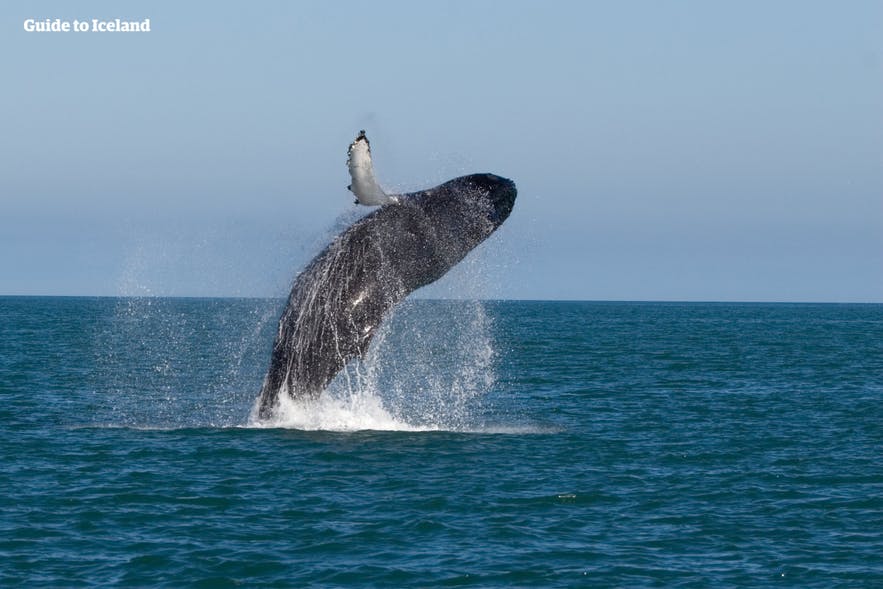
Hvalspik means 'whale fat'.
This is boiled and cured in lactic acid. It's basically blubber and it used to be one of Iceland's main delicacies, although you'd be hard-pressed to find anyone that eats it today.
15. Kútmagar (Fish Stomach)

Basically, this is a fish stomach stuffed with fish liver and boiled with or without rye.
In short, it's a fish belly with guts in it.
To be honest, I'd never heard of it before writing this article, assuming it's not common at all anymore (and by the sound of it, I'm not surprised).
16. Lundi (Puffin)

Puffin can both be boiled in milk sauce or smoked.
Personally, I've only ever tried smoked puffin and it's a proper delicacy, found in restaurants all over the country.
Puffin is a national dish in the Westman Islands, where the largest puffin colony in Iceland is.
17. Kjötsúpa (Meat Soup)
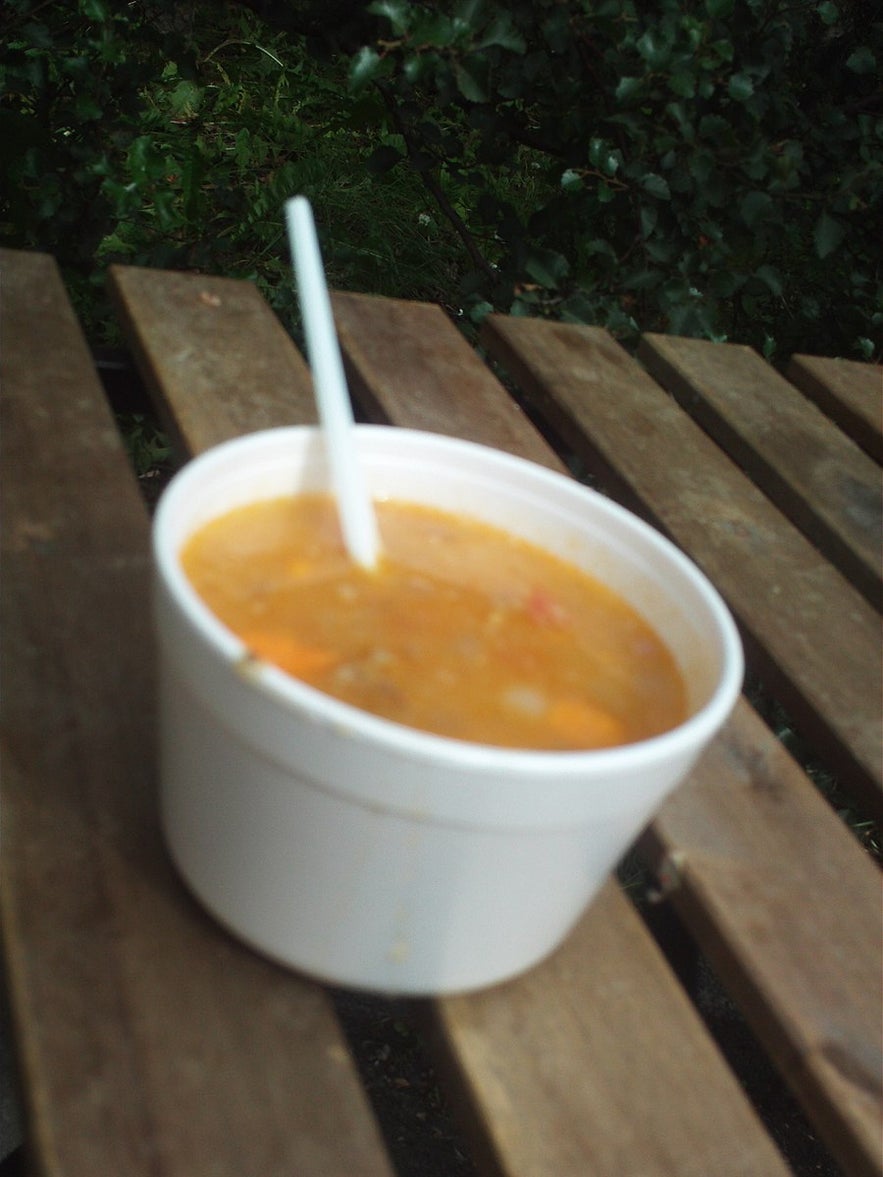 Photo from Wikimedia, Creative Commons, by Ypsilon from Finland. No edits made.
Photo from Wikimedia, Creative Commons, by Ypsilon from Finland. No edits made.
The traditional Icelandic meat soup is a hearty and delicious clear soup filled with chunks of lamb, potatoes, carrots, onions and swede.
I've never come across anyone that doesn't like it (excluding vegetarians and vegans).
18. Fiskisúpa (Fish Soup)
Icelandic fish or seafood soup varies from one house to the next.
The fish soup is most commonly cream-based and the one that I make is a special recipe from my mother that includes a bunch of blue cheese and curry.
I also had one in a restaurant in Ísafjörður which is a close second best I've had! There is such an abundance of fresh fish and seafood on offer in Iceland that you're sure to taste the best fish or lobster soup of your life in Iceland.
19. Skyr
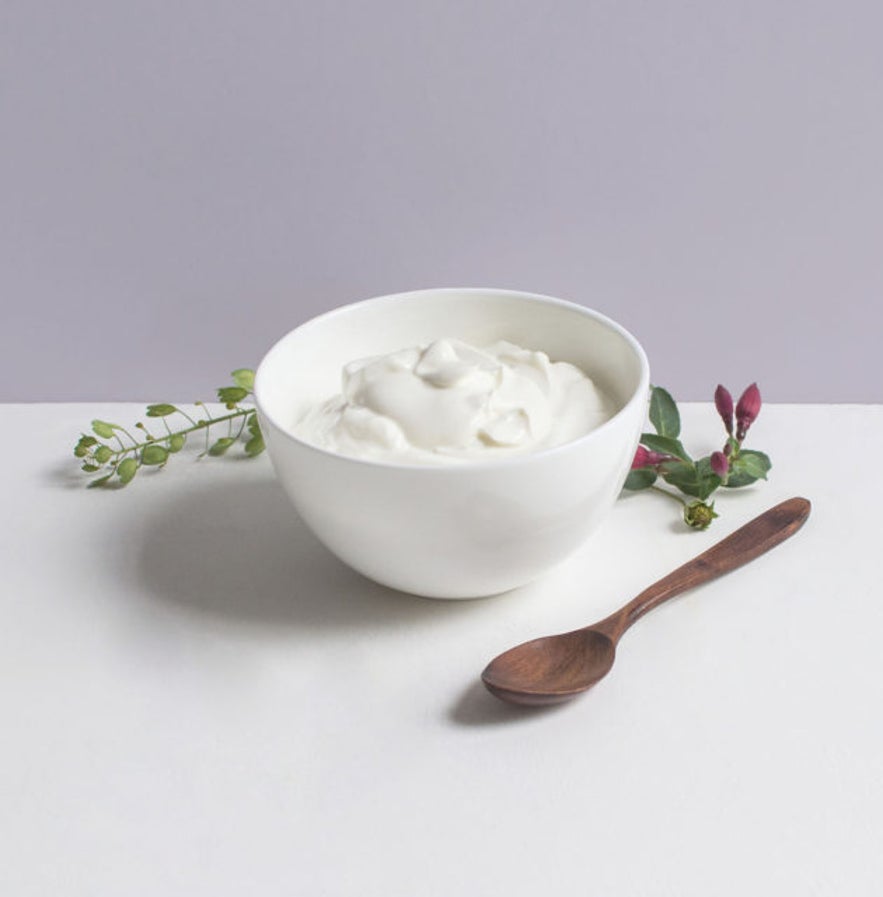 Photo from Wikimedia, Creative Commons, by IcelandicProvisions. No edits made.
Photo from Wikimedia, Creative Commons, by IcelandicProvisions. No edits made.
To conclude, I'll mention the one thing pretty much every foreigner takes an instant liking to. No list of traditional Icelandic food would be complete without mentioning 'Skyr'.
Skyr is a low-fat dairy product that resembles yoghurt but is still very different from yoghurt. It's very rich and creamy but still contains hardly any fat. It's a product that's unique to Iceland and is very popular among both locals and foreigners.
Many desserts have been made from skyr and recently it's been making its way abroad, as you can now buy skyr in supermarkets across numerous countries in the world including the UK, US and our Nordic neighbours.
Did you like our article on the most disgusting food in Iceland? What delicacies did you try during your time here? Did you like the food or find it predictably foul? Make sure to leave your thoughts and queries in the comment's box below.
Weitere interessante Artikel
Isländisches Alphabet und Grundlagen der Sprache
Ist die isländische Sprache schwierig? Wie spricht man Reykjavik oder – besser noch – Eyjafjallajökull aus? Wie liest man das isländische Alphabet? Gibt es Ähnlichkeiten zwischen dem Deutschen un...WeiterlesenIslands Einwohner | Was definiert die Isländer?
Was sind stereotype „isländische Eigenschaften“? Wie kann man einen Isländer definieren? Lies weiter, um alles darüber zu erfahren, was die rund 360.000 Einwohner dieses Inselstaates traditionel...WeiterlesenWeihnachten in Island: Traditionen, Essen und mehr | Der ultimative Guide
Erfahre alles über Weihnachten in Island. Was sind die wichtigsten isländischen Weihnachtstraditionen? Warum gibt es in Island 13 Weihnachtsgesellen, und entsprechen sie dem Weihnachtsmann? Wie wird W...Weiterlesen

Lade Islands größten Reisemarktplatz auf dein Handy herunter, um deine gesamte Reise an einem Ort zu verwalten
Scanne diesen QR-Code mit der Kamera deines Handys und klicke auf den angezeigten Link, um Islands größten Reisemarktplatz in deine Tasche zu laden. Füge deine Telefonnummer oder E-Mail-Adresse hinzu, um eine SMS oder E-Mail mit dem Download-Link zu erhalten.





















